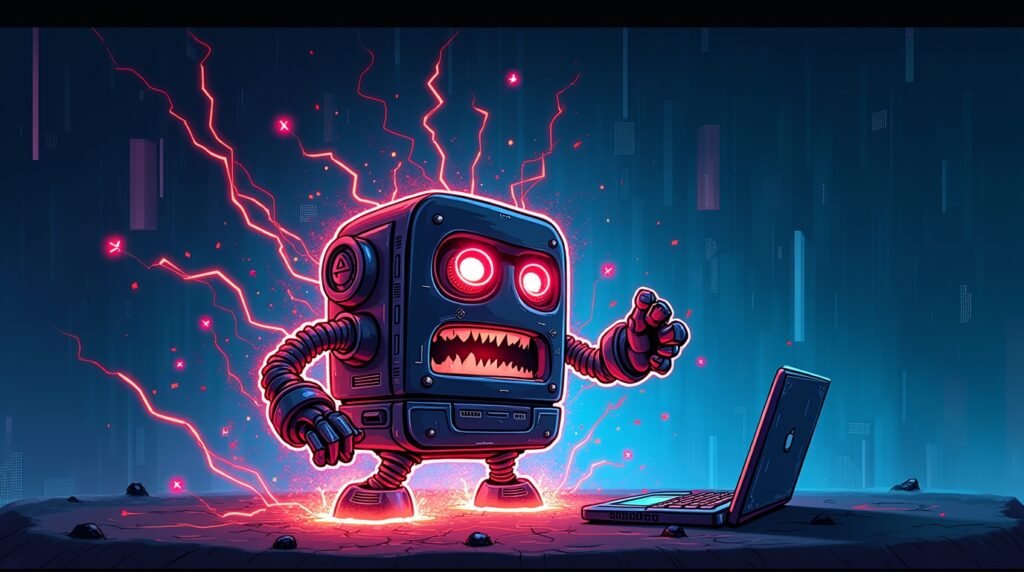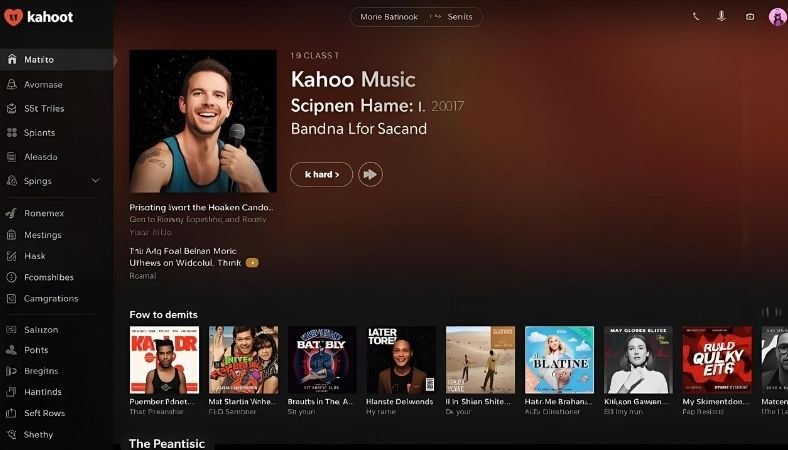Kahoot has become a favourite tool in classrooms around the world. Teachers love it for its fun, game-based learning approach that keeps students engaged and active. But as its use has grown, so have the problems. One major issue is the rise of bot attacks, fake players that flood games and ruin the experience. These disruptions can turn a lesson into chaos in seconds. In fact, many teachers report frequent interruptions caused by Kahoot bots. That’s why it’s essential for every educator using Kahoot or similar platforms to understand these risks and be ready with a smart plan to stop them.

What Are Kahoot Bot Attacks?
Kahoot bots attacks use automated programs, referred to as bots, to overload a Kahoot game session with fake attendees in a range of ways. In emulating actual users, these bots flood the game with tens or even hundreds of phony aliases. This may lead to a slowdown, a total crash, or inaccurate results of the game.
Such attacks do not need advanced technical expertise and are simple to implement and can be done using available and readily available online tools, which are free. They can be started by students or other people, with the only password on the game being a PIN and deciding how many bots will be used.
Why Students (and Others) Launch Kahoot Bot Attacks?
The Kahoot bot attacks can be initiated by students when they are bored, curious, or when they want to disrupt the class. Some do so as a matter of poking fun or challenging limits without being caught with the actual cost. We can even add peer pressure, which can also be involved- students would believe that by joining in or starting an attack, they could be impressing their classmates, and/or they would feel like they would fit in.
Anonymity provided by online and hybrid classrooms facilitates the action more easily than in the environment of a face-to-face classroom. Such a tendency has been enhanced by social media outlets such as TikTok and YouTube, where viral videos presenting the phenomenon of the Kahoot raids depict it as means of subversive protest or entertainment.
Students can take advantage of weaknesses when classroom discipline is weak on digital matters, and students do not receive explicit guidelines on what will happen to them online. Although they are usually perceived to be harmless fun, these attacks may present an obstacle to learning and cause us not to trust technology in education.

Insights On the Impact of Bot Attacks on Learning
Such attacks by Kahoot bots to education sites would be a serious setback to teaching and learning processes. Possibly the most short-term effect is the interruption to lessons and loss of valuable classroom time. The trend in online classrooms or learning management systems characterized by bots in their droves forces educators to stop and start to curb the problem, which leads to a loss of instructional time and a loss of learning achievement.
In addition, Kahoot botter activities lead to undermining trust in online learning technologies. Learners and teachers start to question the trustworthy and safe data use by the platforms they have been counting on and use, thus resulting in lower levels of utilization and unwillingness to implement the innovative use of edtech. This cynicism prevents the development of digital transformation in schools.
The second serious outcome is the drop in student engagement and motivation. Such disturbances associated with bots may leave online learning disorganized and insecure. The disruptive environment may lead to students being disengaged or may believe that their attempt is worthless.
Also, regular Kahoot bots attacks may be destructive to class culture and discipline. The academic success of learners highly depends on a stable and respectful learning environment, and the disturbances that bots cause may lead to frustration, a lack of seriousness or misconduct among learners in learning activities.
Understanding Common Signs of a Kahoot Bot Attack

Sudden Influx of Dozens or Hundreds of Players
A very sudden surge in the number of players joining the game can also qualify as one of the most blatant symptoms of a Kahoot bot attack. Rather than having a manageable number of students, the session can suddenly reveal dozen or hundreds of participants which the host could never have expected or is able to actively account.
Randomized, Nonsensical Names or Repeated Name Patterns
To add insult to the injury, Kahoot bots attacks tend to form profiles of players with weird or useless usernames, e.g., long lines of numbers, letters, or emoticons. The other pattern that you may observe includes the same name repeatedly with minor changes. The names normally are not as coherent or customised as one would normally find in real-life participants, and therefore, it becomes easier to identify suspicious entries during the game.
Lagging or Crashing Sessions
It may make the Kahoot platform too slow or even freeze due to the huge number of bots making it hard to continue with the game. In other extreme cases, the session can even crash, and the host is forced to restart or to quit the activity. This interferes with education and may tum the teacher and even the students who will be frustrated.
Inability to Manage or Remove Users Quickly
The host might find it challenging to evict fake players in case of bot attack because of their magnitude. And even when you use manual controls, it is not good enough to keep up with the bots by removing each one at a time. There may also be bots which instantly rejoin after removal, and it may be practically impossible to reclaim the control of the session in real-time.

Proactive Strategies for Teachers to Follow Right Now
The host might find it challenging to evict fake players in case of Kahoot bots attack because of their magnitude. And even when you use manual controls, it is not good enough to keep up with the bots by removing each one at a time. There may also be bots which instantly rejoin after removal, and it may be practically impossible to reclaim control of the session in real-time.
To provide a smooth and respectful online learning setting with the help of Kahoot, educators may implement multiple proactive approaches. First, turn on the two-step join procedure and the randomised nickname generator. This avoids unfavourable names and names that may distract and makes students focus on purpose. Restrict the availability of the game PIN by either showing it in a time-limited manner or providing its distribution using closed platforms such as LMS systems.
Understand expected behaviour and consequences prior to the commencement of the game. The students should be made to realise that Kahoot is a learning aid rather than a game, and that unruly behaviour will result in expulsion or alternative tasks. When you are ready to ask the questions, pre-screen players names just in case something goes wrong.

Combine the use of Pair Kahoot with live tracking services like Google Meet or Zoom. This enables teachers to ensure the identity of participants is known and to act on any continual disturbance immediately. It is better to have an alternative quiz activity, be it a Google form or a worksheet they can print, in case of technical difficulties or behavioural problems.
Finally, have IT departments or technology learning coaches on board to facilitate implementation and solve problems. These teams are capable of helping with account security, best practices, as well as co-managing sessions to make Kahoot fun and yield a productive learning experience.
Conclusion
Kahoot bot attacks are frustrating, but they don’t have to derail your operations. Preparation is key: stay informed, stay alert, and don’t wait until it’s too late. Share your strategies with colleagues, keep an open line with your IT team, and always be vigilant. A proactive approach turns a potential disaster into a minor hiccup. Be ready, not rattled.
FAQs: Common Questions People Often Ask
- Is it possible block bots forever in my Kahoot games?
Although you can never completely cover the threat, two-step join and nickname generator are only a few of the features that can significantly minimize bot invasions.
- Are there bots-proof versions of Kahoot?
Other tools, such as Quizizz, Blooket, or Gimkit, provide a very similar experience at increasing degrees of the Bot-blocking feature, and none of them are perfect.
- Do these attacks involve students, or outsiders?
Typically, it is students and frequently they are doing that as simple boundary testing or following patterns on the Internet. There are instances where the attackers are of external IPs, or even an unknown source.
- Is it safer to quit Kahoot due to bot danger?
No, only have a plan. Kahoot remains a rather strong, playful tool. When you are aware and have settings, you can use it comfortably.



